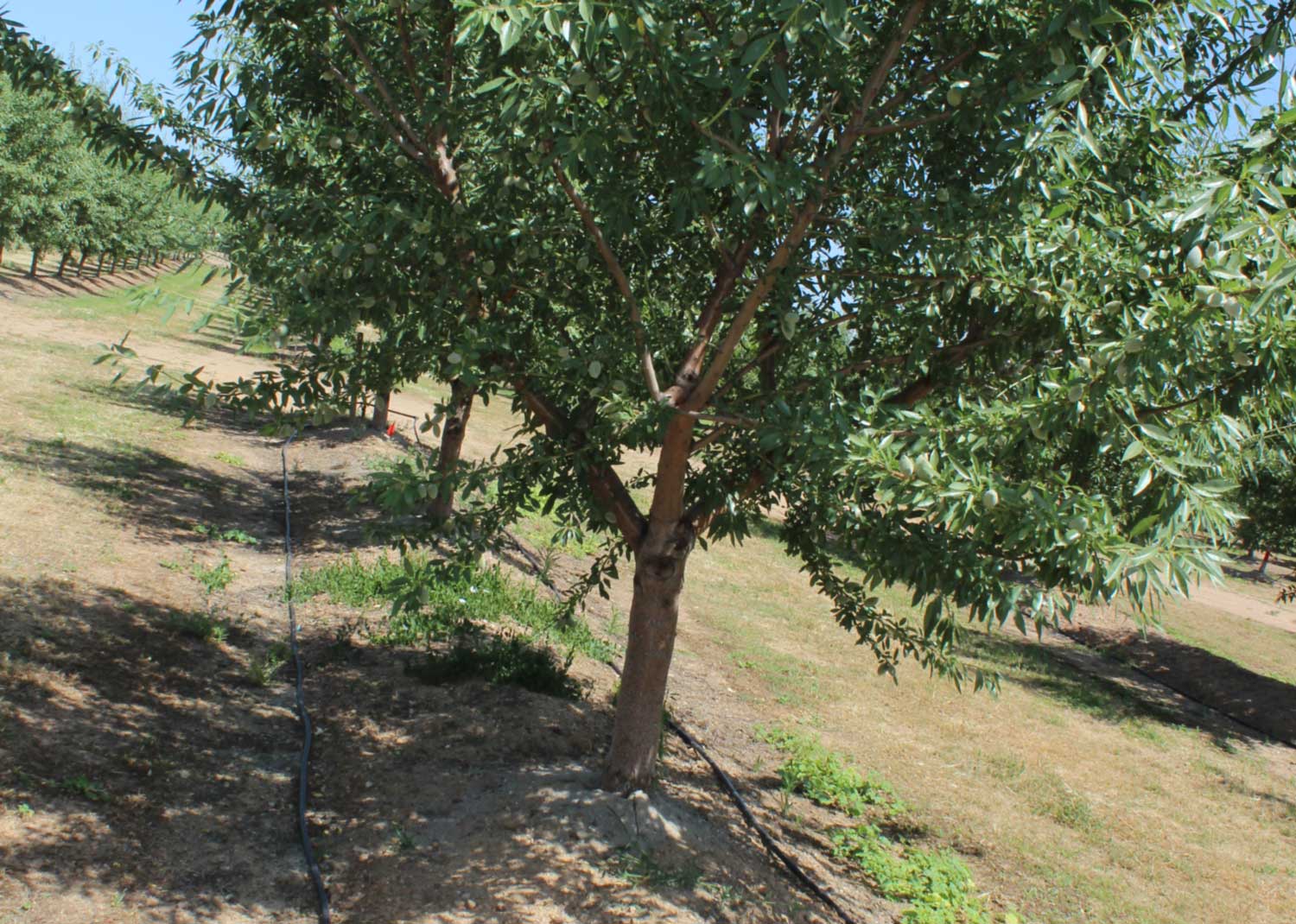Options to control Botryospaeria (BOT) diseases in tree nut crops include good sanitation and cultural practices to reduce the amount of inoculum in the orchard.
University of California plant pathologist Themis Michallides covered the range of BOT diseases that affect walnut, pistachio and almond trees and how growers can reduce infection at the South Valley Nut Conference in Tulare.
Panicle and Shoot Blight of Pistachio
Panicle and Shoot Blight of pistachio was discovered in 1984 in a commercial orchard in northern California and has become a disease of major importance. Buds infected by B. dothidea either will not emerge or will emerge, but the flower or shoot eventually dies. Symptoms of the infection are dark lesions at the base of shoots, rachises and mid ribs of leaves. Later in the growing season, brown, blighted shoots and leaves are easily seen among healthy foliage.
Buds are highly susceptible to infection from pre-bloom in mid- March until the end of May. Rainfall during this time can result in significant infection if spores are present and temperatures are above 50 degrees F.
Leaf stem and mid rib infections are very common and usually are the first symptoms to appear during an epidemic of panicle and shoot blight in an orchard. Infection on the pistachio nut hulls appear in mid-summer as pinhole size, round black spots. The lesions enlarge, turning the hulls of infected nuts black. Eventually, the hulls of infected nuts become light gray/yellowish to silvery with small black spots. Usually, only one or two to several fruit per cluster are infected and these develop the characteristic light gray color, while the rest of the blighted nuts turn tan to brown as the cluster collapses.
Michallides said the disease could be spread in an orchard by water, insects, birds, pollen and pruning equipment. Studies have shown that the disease can spread to two-three cuts after a tool has cut infected wood.
The best control options if the orchard has a history of infection are selective pruning and removal of prunings, and timely fungicide spray applications. A list of products registered for pistachio can be found at ipm.ucanr.edu/PDF/PMG/fungicideefficacytiming.pdf.
Leaf Wetness Model
Fungicide application can be done by calendar or by use of a leaf wetness model, which can signal optimum time to prevent the spread of infection. The four calendar sprays are: mid-April, mid-May, mid-June, and mid-July. The leaf wetness model is weather dependent. Length of time leaves are wet and the temperature determines spray necessity.
Michallides noted that bloom and spring sprays are necessary and spraying either 2-3two to three days before rain is forecast or after provides the best control.
Botryosphaeria or Phomopsis Cankers in Walnuts
BotryospaeriaBotryosphaeria or Phomopsis cankers in walnuts are first seen as wilting and flagging leaves on branches adjacent to a canker. Walnut leaves are not infected with BOT. Nuts are infected first with the pathogen entering the hulls at the site of an injury or insect feeding. Other contributing factors in infection are sunburn, hail damage, downy spot and leaf scars. Symptoms appear later in the summer as the hulls turn black, then brown. Infections can spread to adjacent nuts and invade the peduncles and spurs, resulting in black cankers and dead buds. The presence of walnut scale increases the likelihood of BOT infection. Michallides said 60-70 percent more shoots were infected when scales were present.
Pruning diseased limbs, cutting back to healthy wood can remove the pathogen. Chipping prunings can reduce inoculum level in the orchard and should be done in orchards where infection levels are below 50 percent. Over that number and removal won’t affect the inoculum level.
Huller debris is generally heavily infected and should be chipped.
Growers have three options for fungicide spray timing. Infection levels at 20-50 percent can be handled with one spray in late June. Higher levels warrant three standard sprays from mid- May to Mid mid-July. The leaf wetness model can also be used to time fungicide applications.
Band Canker in Almonds
Band canker in almonds is a BOT canker disease. This canker typically shows as a line of cankers around the trunk. This disease can kill trees at a young age.
The infection enters the trees through growth cracks in the bark or pruning wounds. Most infections occur during wet weather in the spring.
Michallides said keeping tree trunks dry reduces the incidence of band canker and slows the growth of existing cankers. Use of splitters on sprinkler heads is recommended.
Research into band canker infections on very young almond trees indicates the pathogen infected the tree before it was planted or soon after delivery to the field. The band canker pathogen can now be detected on symptomless tissues of young trees. The uniform pattern of band canker on very young trees indicates the trees may need to be protected at a very young age.

Cecilia Parsons
Cecilia Parsons has lived in the Central Valley community of Ducor since 1976, covering agriculture for numerous agricultural publications over the years. She has found and nurtured many wonderful and helpful contacts in the ag community, including the UCCE advisors, allowing for news coverage that focuses on the basics of food production.
She is always on the search for new ag topics that can help growers and processors in the San Joaquin Valley improve their bottom line.
In her free time, Cecilia rides her horse, Holly in ranch versatility shows and raises registered Shetland sheep which she exhibits at county and state fairs during the summer.
















